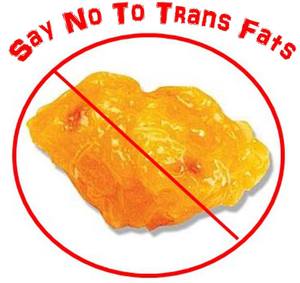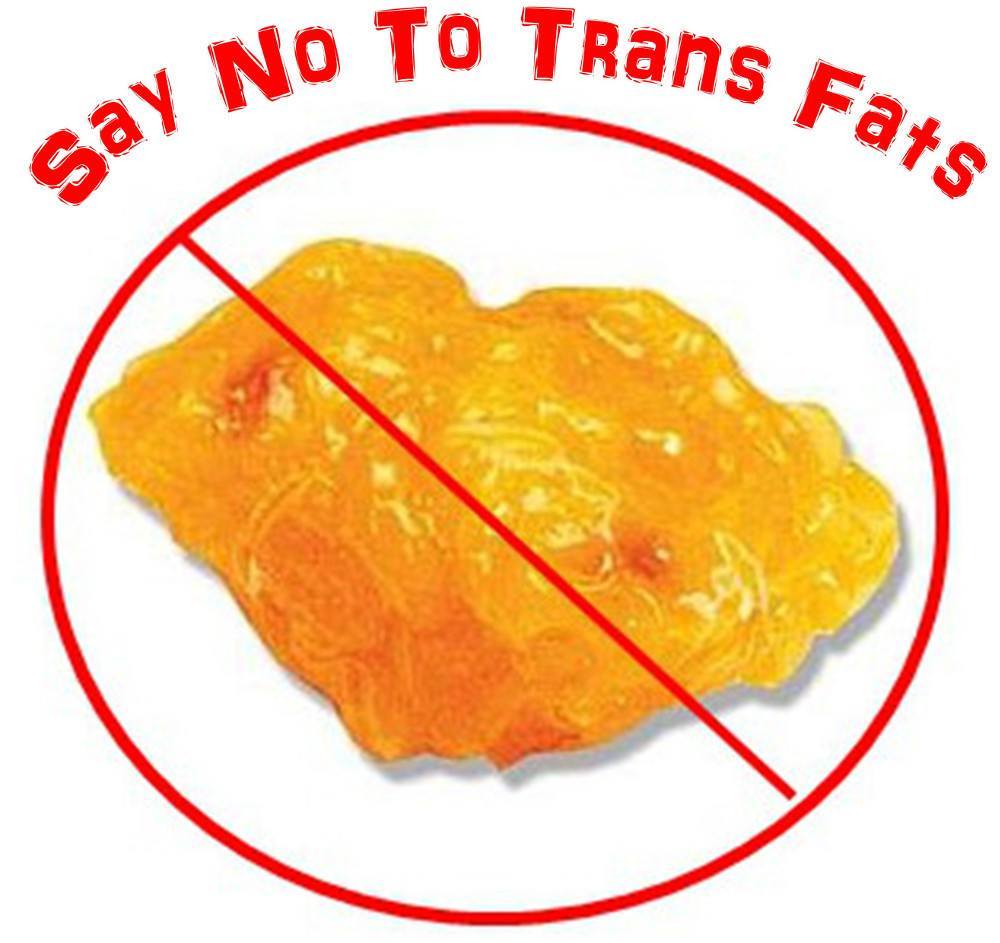Nuitrition and Health
Lesson 2
Nutrition and metabolism


“Metabolism is defined as all the various chemical processes taking place to maintain live cells and organisms in the human body.
Metabolism is of two broad types.
Catabolism: this specific process causes the breakdown of molecules to attain energy.
Anabolism: this is the process through which all cell compounds are synthesized.”
Metabolism is a constant process that begins when we're conceived and ends when we die.
It is a vital process for all life forms — not just humans. If metabolism stops, a living thing dies.
The three main purposes of metabolism are:
- the conversion of food to energy to run cellular processes
- The conversion of food/fuel to building blocks for proteins, lipids, nucleic acids, and some carbohydrates
- The elimination of nitrogenous wastes.
Metabolism is strongly linked to the nutrition of a person, as well as the type of nutrients they consume daily. Nutrition is described as the key driver for metabolism.
After food is eaten, molecules in the digestive system called enzymes break proteins down into amino acids, fats into fatty acids, and carbohydrates into simple sugars (for example, glucose). In addition to sugar, both amino acids and fatty acids can be used as energy sources by the body when needed.
These compounds are absorbed into the blood, which transports them to the cells.
After they enter the cells, other enzymes act to speed up or regulate the chemical reactions involved with "Metabolising" these compounds.
During these processes, the energy from these compounds can be released for use by the body or stored in body tissues, especially the liver, muscles, and body fat.
In this way, the process of metabolism is really a balancing act involving two kinds of activities that go on at the same time — the building up of body tissues and energy stores and the breaking down of body tissues and energy stores to generate more fuel for body functions:
The metabolic pathways rely heavily upon the nutrients we take in, which are later assimilated to produce energy. This energy is then used by the human body to synthesize new proteins and nucleic acids, like DNA and RNA.
Various nutrients that aid in the metabolic process manage all the particular bodily requirements for different substances, respective processes and the amount or level below which ill health ensues.
Fundamental nutrients provide energy in terms of calories and supply the required chemicals the body is unable to synthesize. Food is what provides an array of substances that are vital for the regular maintenance and upkeep of the body, the repair of body tissues, and for an overall smooth functioning. Hence, this is where the importance of a good diet comes in.
The diet is what determines the type of nutritional foods a person will consume, which consequently affects the metabolism of the body and its various chemical processes.
The diet needs to be organized in such a way that it contains a balanced amount of the necessary nutrients, such as hydrogen, carbon, oxygen, phosphorus and nitrogen, as well as about twenty different inorganic substances.
The inorganic substances are provided by the basic food groups: fats, carbohydrates, proteins and lipids.
Lipids are fatty acids that occur naturally and include substances like fats, steroids and other important fat-soluble vitamins. All these food groups, along with necessary vitamins, minerals and water, are essential for a steady metabolic rate.
However, they all react differently during metabolism.
For instance, food that provides carbohydrates is in three forms, namely starch, sugar and cellulose, which is also known as fibre.
The first two types make up the largest source of energy that humans derive for their bodily functions and cellulose is what adds bulk to the diet. This is important, because it helps to prevent constipation, maintains normal and healthy bowel movements, lowers cholesterol levels and retains normal blood sugar levels.
All cells and tissues in the body rely on glucose for their processes, and carbohydrates are what generate the amounts of sugar and glucose that are required; they do this through the process of metabolism. As seen above, the carbohydrates we derive from our diet come mainly from foods like rice, pasta, noodles, wheat, bread and potatoes.

Proteins have a separate function in metabolism. Proteins are the main tissue producers in the body. These are naturally present in every cell and tissue and have many different uses.
They support cell structures, bodily processes and haemoglobin production to transmit oxygen throughout the body.
Proteins are also responsible for helping enzymes to create the supply of nitrogen in the body for the vital DNA and RNA genetic elements and help in the energy manufacturing process.
Proteins are important because they include a variety of amino acids that are instrumental to bodily functions. As mentioned previously, they are a total of twenty, out of which eight cannot be synthesized by the body and are hence known as "essential" amino acids.
Popular foods that are rich in protein include eggs, meats, milk and some vegetables.

Fats are also sources of energy for the body, albeit concentrated ones. This means that they produce about twice as much energy as carbohydrates and proteins. Fats also serve a variety of purposes, such as aiding in the formation of the cellular structure, the provision of reserve energy and the assimilation of fat-soluble vitamins.
Minerals and vitamins are also important for the metabolic process.
They do not play a role in the energy requirements of the body; however, they act as body regulators and create metabolic pathways for the body.


“Let food be thy medicine and medicine be thy food.”
- Hippocrates-
Nutrition and disease
Poor nutrition results in serious illnesses and diseases that are completely preventable if an individual maintains a healthy lifestyle. Nutrition plays a huge role in disease prevention, especially for diseases like osteoporosis, type 2 diabetes and heart disease, which is preventable if a balanced diet is followed.
Some ways a balanced and enriched diet can help to reduce the likelihood of disease will now be discussed.
The main culprits for heart disease are high cholesterol levels, high blood pressure and weight problems.
Following healthy habits can easily reduce a person's risk of contracting heart disease and can be achieved by following these simple steps:
A balanced diet should include food items from all the basic food groups with fruits and vegetables.
When it comes to fats, these should contribute only 20-35% of the total calories a person consumes in a day.
From these, only 10% should come from saturated fats and not more than 1% should come from trans-fat.
These types of fats are harmful for the body and contribute to excess weight and blockage of arteries if consumed in large amounts.
A person should consume at least 1.5 to 2.5 cups of fresh, frozen or dried fruit, and around 2.5 to 3.5 cups of healthy vegetable servings every day, depending on their age and activity levels.
Always try to choose sugar-free and fat-free dairy products that are rich in vitamin D.
Three servings each day would be the appropriate amount for most people.
Protein requirements of the body should come from lean meats, fish, poultry and legumes. Around to 10-25% of calories should be comprised of proteins.
For reducing the possibility of cancer, a person can make some healthy eating lifestyle choices to ensure that their diet protects them. Studies show that obesity can greatly increase the chances of bowel cancer, pancreatic cancer, breast cancer and kidney cancer; a combination of vitamins and minerals that suit the person's needs can offer some protection.
Research has also suggested that consuming a large amount of leafy greens like kale, spinach and leaf lettuce, all of which contain important fibres and carotenoids, will significantly benefit a person's overall health.
Carotenoids are widely known to help prevent the risk of cancer, as they contain antioxidants.
Vegetables like broccoli, cabbage and cauliflower contain substances such as folate, which reduces the occurrence of cancer.

Fruit also includes a large variety of nutrients and are rich in fibre, which helps them to protect the human body against cancers of the upper digestive system, including the mouth, throat and food pipe.
Also, cooking food a certain way can increase or decrease the risk of cancer. Cooking food at high temperatures, especially red meats, can produce harmful chemicals.
Scientists have concluded that a bad nutritional diet causes one in ten deaths related to cancer. Therefore, there is no doubt that poor nutrition can ravage the body with diseases that could easily have been prevented.
We will now identify how one can stay healthy by following a regimen of good eating habits coupled with a balanced diet.
Nutritional health
If a person follows a balanced nutrition plan, their body will reflect healthy lifestyle choices. This means that there is a definite and strong link between good health and suitable nutrition. The only way that the human body can function properly and avoid deficiency problems is when it has a daily intake of nutrients, which is achieved by consuming a variety of healthy foods.
For example, in the olden days, sailors who used to travel on long journeys developed scurvy due to a serious deficiency of vitamin C which is found in citrus fruit. They had to take a large stock of fruits like oranges and limes to battle this problem.
The connection between health and nutrition is very simple: if an individual has poor nutrition, it will manifest itself as poor health.
The most common deficiencies caused by a lack of nutrients in the body are related to calcium and iron.
In order to have a healthy diet one can follow these measures:
1. Drink plenty of water and less alcohol.
2. Increase fibre intake.
3. Increase consumption of fruit and vegetables.
4. Consume less trans fats and salt.
Reasons to base diets on many varieties of natural or minimally processed foods mainly of plant origin
The amount of energy per unit of weight (energy or calorie density) and the quantity of nutrients per unit of energy (nutrient density) of different types of natural or minimally processed foods vary very greatly.
Animal foods are usually good sources of proteins, vitamins and minerals, but contain no dietary fibre, and when fatty are energydense and contain excessive amounts of unhealthy saturated fats. Substantial consumption of such foods increases the risk of several chronic diseases.
Foods of plant origin are often good sources of dietary fibre and several nutrients, and almost all are low in energy density. But they need to be consumed in combination to supply an adequate range of nutrients.
In fact, apart from breast milk during the first six months of life, no food alone gives human beings the nutrient content that their body requires. This explains why the human species has evolved so as to be able to consume a wide variety of foods.
It also explains why several societies and traditional food systems were established by combining foods of plant origin with nutrient profiles that complement each other, together with small amounts of food of animal origin.
Examples of combinations of plant foods are grains with legumes (common in Mexican cuisine, and in Brazil represented by rice and beans), cereals with vegetables (common in Asian cuisines and found in the Brazilian state of Pará in rice with jambu leaves), tubers with legumes (common in African countries and present in Brazilian tutu based on beans with cassava grits), and cereals or tubers with fruits (common in various cuisines and present in the rice with pequi fruit from Goiás and in cassava grits with the açaí berry from the Amazon).
In most traditional cuisines, meat, fish, eggs and other animal foods are consumed sparingly, as part of dishes and meals that are based on plant foods. Animal foods add flavour and also enhance the flavour of grains, beans, vegetables and tubers, and improve the nutritional composition of the overall diet.
Use of plant foods with intense flavours, such as garlic, onion, peppers, and herbs like basil and coriander, has a similar purpose.
Combination of a plentiful variety of foods of plant origin with small quantities of foods of animal origin results in nutritious, delicious and appropriate diets, which therefore are satisfying biologically, sensorially, and culturally.
Reasons why Oils, fats, salt, and sugar should be used in small amounts
Oils, fats, and sugar are energy-dense. Oils and fats contain six times more calories per unit of energy than cooked grains, and twenty times more than cooked vegetables. Sugar is five or ten times more energydense than most fruits.
Oils, fats, sugar, and salt contain high amounts of dietary constituents that in small amounts are harmless but in large amounts are harmful.
As well as being energy-dense, various oils and fats contain substantial amounts of saturated fats, which increase the risk of heart diseases. When consumed in large amounts, free sugar from any source including table sugar increases the risk of dental caries as well as obesity, and other chronic diseases.
The sodium in salt is an essential nutrient but only in small amounts. In large amounts, it increases the risk of heart diseases.
However, as these products are essentially used to season and cook food, their impact on the nutritional quality of diets depends on the amount used in freshly prepared dishes and meals.
It is true that oils, fats, salt, and sugar tend to be quite easily accessible. They can be stored for a long time and are usually not expensive and this encourages their excessive use.
Yet, if used with restraint and appropriately combined with natural or minimally processed foods, they enable the creation of varied, delicious, and nutritionally balanced freshly prepared dishes and meals.
Processed foods
According to the study, ultra processed foods are those that "contain multiple ingredients and are manufactured through a multitude of industrial processes.
" Besides sugar, salt, fat and oil, these foods include additives such as flavours, colours, sweeteners and emulsifiers. Examples of ultra-processed items include packaged snacks; ice cream; candies; energy bars; processed meats; ready-made meals; and packaged cookies, cakes and pastries.
In the new study, the researchers, from the University of Paris analysed data from more than 44,000 adults age 45 and older living in France. Participants periodically completed questionnaires about the foods they'd eaten over the previous 24 hours and were followed for about 7 years. During the study period, about 600 participants died.
On average, about 30 percent of the participants' daily calories came from foods that were ultra-processed. Each 10 percent increase in the proportion of ultra-processed foods in the participants' diets was linked with a 14 percent higher risk of death over the 7-year study period.
The findings held even after the researchers took into account other factors that could affect a person's risk of death, such as income and education level, body mass index (BMI), physical activity, smoking habits, total calorie intake, alcohol consumption, and a family history of cancer or heart disease.
Ultra-processed foods are known to have high levels of sodium and added sugar and low levels of fibre; these dietary components might in turn contribute to an increased risk of noncommunicable diseases, such as heart disease and cancer.
In addition, it's possible that chemicals added to or produced during the manufacturing process may have harmful effects, the researchers said. For example, some of the processes used to preserve meat may produce compounds called polycyclic aromatic hydrocarbons (PAHs), which have been linked with developing cancer.
Compared with unprocessed food, processed food has too little fibre
Fiber is important to health because it plays a key role in how food is absorbed in the gut. In the intestines, fiber forms a gelatinous barrier that coats the intestinal walls. This barrier slows the absorption of glucose and fructose into the blood, which helps prevent blood sugar levels from spiking.
The slow absorption of food gives gut bacteria more time to feed on it, the gut bacteria break down food, the compounds they produce can benefit the body.

Too many trans fats
Trans fats are another problem for processed foods, even though the Food and Drug Administration has passed new regulations that require companies to remove trans fats from their foods by June 2018, the ingredients are still currently found in processed foods.
Trans fat molecules are structurally different from other types of fats, such as omega-3 and omega-6 fatty acids.
Because of this difference — a double bond found in the molecule — the body is unable to break down trans fats.
Instead, the trans fats end up in a person's arteries and liver, where they generate damaging free radicals.
Reasons to limit consumption of processed foods
Processed foods retain the basic identity and most of the nutrients of the foods from which they are derived. But the added ingredients and the processing methods used in their manufacture compromise their nutritional composition.
The addition of salt and sugar, in quantities generally greater than used in culinary preparations, transforms the original food into a source of nutrients whose excessive consumption is associated with heart disease, obesity, and other chronic diseases.
The loss of water in the manufacturing of processed foods and the addition of sugar or oil transform foods with low or medium energy density, such as milk, fruits, fish, and wheat, into foods with high energy density, such as cheeses, sugared fruits, canned fish in oil, and breads.
Diets that have high energy density increase the risk of obesity.
Therefore, the consumption of processed foods should be limited to small quantities, either as ingredients in culinary preparations, or as a side dish in meals based on natural or minimally processed foods. They should not displace freshly prepared meals.
When processed foods are chosen, it is important to consult the labels on the foods to opt for those with a lower content of salt or sugar.

The manufacturing of ultra-processed foods, generally done by large industries, involves several stages of processing techniques and many ingredients, including salt, sugar, oils and fats, and several substances for exclusive industrial use.
Ingredients for industrial use, common in ultra-processed foods, include soy and milk proteins, meat extracts, substances obtained from the additional processing of oils, fats, carbohydrates, and proteins, and substances synthesised in laboratories from food substrates or other organic sources, like petroleum and coal.
Many of these synthesised substances serve as food additives whose function is to extend the duration of the ultra-processed foods or, more frequently, to give them hyper-attractive colour, flavour, aroma, and texture.
When natural or minimally processed foods are present, they represent a tiny proportion of all the ingredients found in ultra-processed foods.
Industrial processes employed in the manufacture of ultra-processed foods include those only used by industry, such as extrusion of corn flour to make packaged snacks, as well as industrial versions of culinary techniques, such as pre-processing with frying.
Ultra-processed foods include confectionery, drinks that are sweetened with sugar or artificial sweeteners, powders for juices, sausages and other products that are derived from meat and animal fat, pre-prepared frozen dishes, dried products such as cake mix, powdered soup, instant noodles, ready-seasonings, and an infinity of new products that arrive at the markets every year including packaged snacks, morning cereals, cereal bars, and ‘energy’ drinks.
Breads and baked goods become ultraprocessed foods when, in addition to wheat flour, yeast, water, and salt, their ingredients include substances such as hydrogenated vegetable fat, sugar, starch, whey, emulsifiers, and other additives.
A practical way of distinguishing ultra-processed foods from processed foods is to consult the list of ingredients, which by law, should provide labels on packaged foods that possess more than one ingredient.
A high number of ingredients (usually five or more) and the presence of ingredients whose names are not familiar and are not used in culinary preparations (hydrogenated vegetable fat, interesterified oils, fructose syrup, protein isolates, bulking agents, thickeners, emulsifiers, colorants, flavour enhancers, and several other types of additives) identify ultraprocessed foods.
Unlike processed foods, a majority of ultra-processed foods are consumed throughout the day, displacing foods like fruits, milk, and water or, as main meals, instead of culinary preparations. Therefore, these products tend to limit the consumption of natural or minimally processed foods.
Ultra-processed foods have an unbalanced nutritional composition.
The main ingredients of ultra-processed foods make them fatty or sugary, or both. It is common that these products have high content of sodium because of the addition of a lot salt.
The addition of salt is necessary to extend the duration of the products and intensify their flavour or even to disguise undesired flavours that result from additives or from substances generated from the techniques involved in the ultra-processing.
For ultra-processed foods to last longer and not become prematurely rancid, they are often prepared with fats that resist oxidation. These fats, however, tend to obstruct arteries that carry blood within our bodies. Particularly common in ultra-processed foods are vegetable oils with a high content of saturated fats and hydrogenated fats.
Apart from being high in saturated fats, hydrogenated fats also contain trans fats.
Ultra-processed foods tend to have a very low content of dietary fibre, which protects against heart diseases, diabetes, and some common cancers.
The absence of fibre is a result of the lack of or the limited presence of natural or minimally processed foods in these products. This same reason also results in ultra-processed foods having low contents of vitamins, minerals, and other substances with biological activity, which are naturally present in natural or minimally processed foods.
Ultra-processed foods are now often reformulated and advertised as if they are healthy, being labelled as for example ‘light’ or ‘diet’, or low in fat or sugar, or free from trans fats, or high in fibre or vitamins and minerals. These adjustments may improve the products which however remain ultra-processed and unhealthy, and certainly not good alternatives to natural or minimally processed foods and freshly made dishes and meals.
Therefore, in summary, the unbalanced nutritional composition of the ingredients of ultra-processed foods favours heart disease, diabetes, and common cancers, and contributes towards increasing the risk of nutritional deficiencies. Furthermore, although each additive used in these products have to pass tests and be approved by health authorities, the long-term and cumulative effects on health of being exposed to various additives are not always known.
ultra-processed foods promote excessive consumption of dietary energy
Ultra-processed foods disturb mechanisms located in the digestive system and the brain that ensure that the intake and expenditure of dietary energy is balanced.
These mechanisms tend to underestimate the energy contained in ultra-processed foods, with the result that the sense of satiety occurs only after excess consumption.
Excess dietary energy is stored as body fat.
The result is obesity.
The high quantity of energy per gram is one of the main features of ultra-processed foods which can disturb the regulation of energy balance.
The energy density of ultra-processed foods ranges from about 2.5 calories per gram (most baked products) to about 4 calories per gram (cereal bars), and may reach up to 5 calories per gram in the case of packaged snack products and filled biscuits. Such energy density is 2 to 5 times higher than that of common freshly prepared dishes.
Other attributes common to many ultra-processed foods can also compromise the mechanisms that signal satiety and control the appetite, thus further favouring the involuntary consumption of calories and increasing the risk of obesity.
Hyper-palatable.
Ultra-processed foods are formulated with combinations of oils, fats, sugars, salt and additives, so as to be hyper-palatable, and sometimes habit-forming or even in effect addictive. The advertising of some of these products correctly identifies them as ‘irresistible’.
Designed to be consumed mindlessly. Most ultra-processed foods are made ready-to-consume, without plates, cutlery or tables. They are eaten at home while watching television, at a desk at work, or while walking in a street.
These characteristics are often advertised as desirable.
Gigantic sizes. The cost to the manufacturer of the ingredients of ultra-processed foods is usually low and often trivial. So they are commonly sold in ‘super-sizes’ with discounted prices. This induces over-consumption.
‘liquid calories’. Sweetened drinks ‘deceive’ the body’s mechanisms that signal satiety. All such drinks – colas, other soft drinks, ‘energy’ drinks, fruit juices with added sugars, other fruit drinks – are therefore very likely to be over-consumed.
Ultra-processed foods damage culture, social life, and the environment
The reasons described until here, seen in their totality, would alone be sufficient to justify the recommendation for avoiding the consumption of ultra-processed foods. Their ingredients and the processing techniques used in their manufacture make them intrinsically unhealthy.
However, there are still other reasons to avoid ultra-processed foods. These arise from the impact of their production, distribution, marketing, and consumption on culture, social life, and the environment. These reasons also, indirectly, affect human health and well-being.
impact on culture. Brands, packages, labels, and the contents of ultraprocessed foods tend to be identical throughout the world. A type of soft drink made by one giant manufacturer is essentially the same the world over.
Types of burger made by various manufacturers are much the same everywhere.
Leading brands are promoted often using the same entertainers, models, music and slogans everywhere, including on television, the internet and social media.
They are disseminated by means of intensive and aggressive advertising campaigns, including the launching of hundreds of new products every year, which leads to a false sense of diversity.
Because of these campaigns, genuine food cultures come to be regarded as uninteresting. All this creates a sense especially to children and young people that the culture and identity of their own country, region, ethnicity and tradition including food culture and patterns, are boring.
Young people especially are being induced by major manufacturers, in effect acting in concert, to have a false sense of belonging in a superior, modern, high cost and expense consumer culture.
Impact on social life.
Ultra-processed foods are formulated and packaged to be ready-to-consume without any preparation. This makes meals and sharing of food at table unnecessary. Ultraprocessed foods can be consumed anytime, anywhere, often when being entertained or when working, walking in a street, driving, or talking on a phone.
These are mostly isolated situations, which are disguised by advertisements suggesting that such products promote social interaction, which they do not.
Impact on environment.
The need for cheap oils, sugar and other raw materials for ultra-processed foods creates monocultures and farms producing for export and not for local consumption. Intensive farming of raw materials is dependent on pesticides and intensive use of fertilisers and water.
The manufacture and distribution of most ultraprocessed foods involves long transport routes, and thus excess use of non-renewable energy and water, and emission of pollutants. This all results in environmental degradation and pollution, loss of biodiversity, and draining and loss of water, energy and other natural resources.
Production and consumption also causes creation of vast amounts of waste and garbage, dumped in disgusting and dangerous landfill sites.
Overall, ultra-processed foods are a serious threat to the sustained survival of the planet.
For all the reasons described above, ultra-processed foods should be avoided.
Good nutrition golden rules
Like all golden rules, the overall rule here is easy to remember and follow: always prefer natural or minimally processed foods and freshly made dishes and meals to ultra-processed foods.
In other words, opt for water, milk, and fruits instead of soft drinks, dairy drinks, and biscuits, do not replace freshly prepared dishes (broth, soups, salads, sauces, rice and beans, pasta, steamed vegetables, pies) with products that do not require culinary preparation (packaged soups, instant noodles, pre-prepared frozen dishes, sandwiches, cold cuts and sausages, industrialised sauces, ready-mixes for cakes), and stick to homemade desserts, avoiding industrialised ones.


